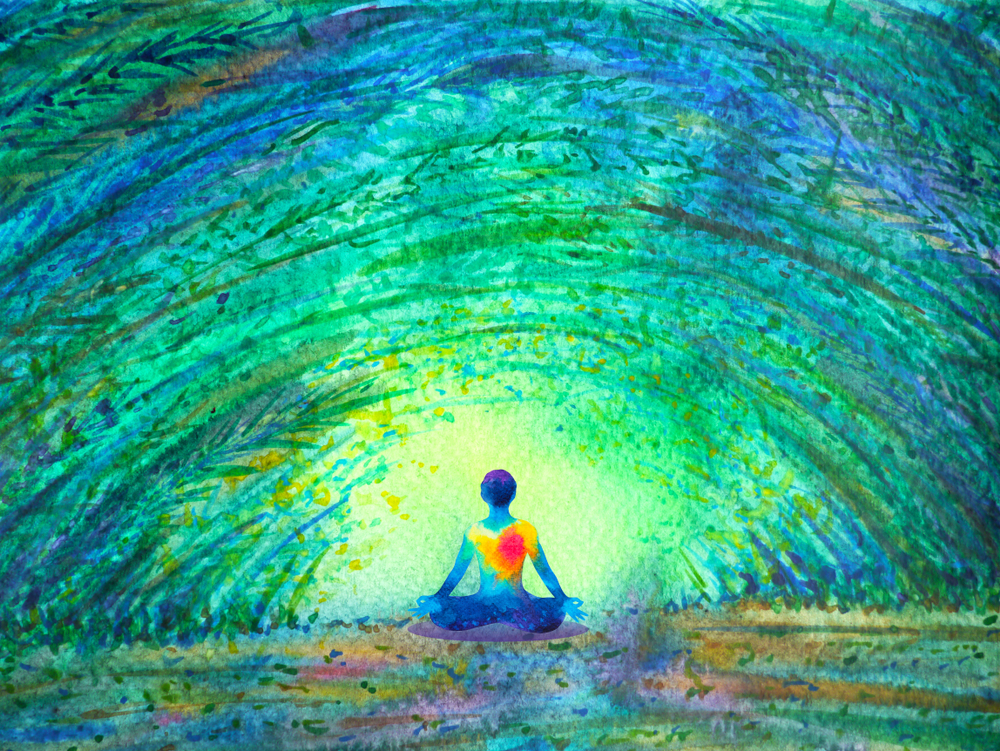
Millions of people across the United States practice yoga on any given day. For many of these yoga enthusiasts, one basic chant is instantly recognizable–om. To casual outsiders, this mantra seems simple yet mysterious. But what does it mean, and why is it such a big deal? To answer these questions, we must unpack the stories behind the word. Although there’s much to explore, a quick trip through etymologies and spiritual beliefs can help you understand why “om” is so important.
Writing Om
Om is represented by the ॐ symbol, which is actually a ligature. Like the “æ” symbol in our Latin alphabet, it combines two existing glyphs into one. With “om,” the primary glyph is pronounced “au.” The dot and half-circle on top are a diacritic, indicating a change in the glyph’s sound. This diacritic adds an “m” on the end.
Devanagari script is the writing system used for Sanskrit. Today, it’s the script for many modern Indo-Aryan languages such as Hindi, Nepali, and Gujarati. Yogapedia explains that its name comes from two separate words–deva, which means “deity,” and “nagari,” rendered in English as “city.” What’s also interesting about Devanagari is its origins. It developed from a succession of other South Asian scripts, including Brahmi. Many scholars believe that Brahmi developed from the ancient Aramaic alphabet, which itself gave rise to the classical Hebrew alphabet.
Om: One Syllable or Three?
When you read the word “om,” your eyes see it as one syllable in our familiar Latin alphabet. But this mantra actually contains three or four syllables. India Times points out the difference between this and the typical English version, “om.” The key lies in how it’s voiced. The ॐ glyph can be pronounced in two parts. The “AU” becomes “ah-oh,” while the “m” is actually voiced as “mm.” This results in the familiar multisyllabic “ah-oh-mm” sound.
Contemplation and Integration
Om is originally a Sanskrit word that Merriam-Webster says is “used in contemplation of ultimate reality.” That definition doesn’t even scratch the surface. Devotees of Hindu, Buddhist, and other related spiritual traditions consider it sacred. The Hindu American Foundation refers to om as “the primordial sound of creation . . . the original vibration of the universe.” Most connect it to Brahman, the ultimate reality or universal Absolute.
Those who aren’t Hindu may confuse Brahman with Brahma, but there’s a distinction between the two figures. World History Encyclopedia explains that Brahma is a supreme god who created the universe for himself. Brahman, on the other hand, is the Supreme Everything, existing without gender or form. Brahman is infinite, having no beginning or end.
Some also associate om with Atman, a Sanskrit term that roughly translates as “soul.” Atman is the true self that lies beyond the mind, ego, or body. It is eternal and does not exist by itself. The common saying “Atman is Brahman” signifies that the two are not distinct. Maya is the illusion that the two are separate, which many Hindu traditions say is one major cause of human suffering. Removing that illusion is vital to attaining freedom from this suffering.
Beyond Mere Definitions
The Hindu American Foundation remarks that some may see “om” as a simple mantra. While the word itself is chanted as a mantra, it’s more than just a meditation aid or a key to calming oneself. Om is a connection to the Absolute, the Supreme Eternal Reality that makes up the cosmos. If Atman is the universal self beyond our minds, emotions, and bodies, its link to the Absolute is critical. For believers in Brahman, the Atman, and the oneness of everything, achieving such connections is a vital part of their spiritual lives.

